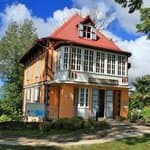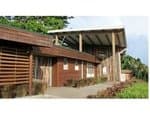Matouba waterfall
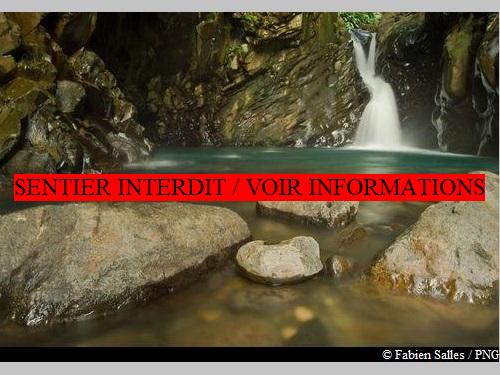
Saint-Claude
Matouba waterfall
Easy
1h30
842m
+33m
-33m
Return trip
PR (short hike network)
Embed this item to access it offline
9 points of interest

 History
HistoryThe Delgrès rebellion
Louis Delgrès was born in Martinique. He symbolises resistance to slavery. He was made a colonel in the French army in 1802. Later that year, slavery was restored, after earlier being abolished in the French colonies. Louis Delgrès refused to be associated with this step backwards and deserted the army to organise resistance in Guadeloupe, in Basse-Terre (near Fort Delgrès). After two weeks of fighting, Louis Delgrès took refuge in the hills of Matouba with 300 men. They were faced with 1,800 soldiers led by Richepance. The Guadeloupeans resisted and moved to the Habitation Danglemont a few miles away. On 28 May, Delgrès and his fellow warriors, knowing that all was lost, decided to blow up their own base, taking as many enemy soldiers with them as possible. They cried out: "Live free or die!".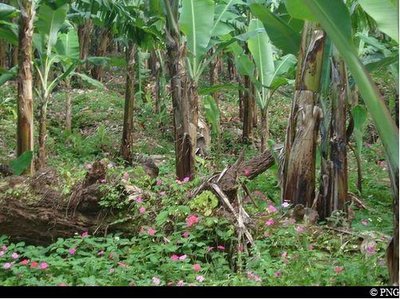
Bananeraie et impatients en fleurs - PNG  Flora
FloraBanana plantation
The banana tree is a member of the Musaceae family. It sometimes grows 12 metres high. It is not actually a tree but a herbaceous plant. It has no trunk but superimposed large leaves to keep it upright. It could be compared to a giant leek. It is a perennial plant with 80% consisting of water. The flower points upwards, then spreads out towards the ground. In Guadeloupe, bananas are a vital part of the economy and one of the main local crops (the plastic wrapping to be seen on the bunches of bananas are there as protection against insects, diseases and bad weather). Banana plants are also used in arts and crafts, for example in making hats.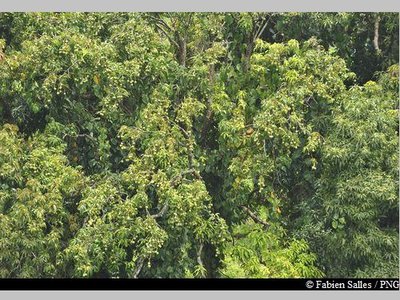
manguier et ses fruits ... - Fabien Salles / PNG  Flora
FloraMango tree
The mango tree (Mangifera indica) is a member of the Anacardiaceae family. The species originated in eastern India or Borneo, and was introduced into west Africa and South America in the 16th century by the Portuguese.
Mango trees can grow to a height of 20 to 30 metres. They have tough, shiny and evergreen leaves. The sweet fruit, mangoes, are oval in shape with a waxy, smooth skin.
 Flora
Flora"Rose-apple"
Syzygium jambos is a member of the Myrtaceae family and is native to India and Malaysia. It was introduced into Jamaica in 1762 and then spread to the rest of the Caribbean archipelago. It is considered as an invasive species here.
The flowers attract bees. They are ivory in colour and grow in groups of 4 or 5. Each of them looks like a pompon. The round fruit is covered with a fine, smooth and light yellow skin. The yellow pulp is crunchy. It has a sweet taste, reminiscent of roses.
The tree is used for shade in coffee and cacao plantations.
 History
HistoryLe Saut Mortel
Be careful, this viewpoint (lit. Deadly Falls) over the Saint-Louis falls and river is very dangerous. According to legend, uncooperative slaves were thrown to their deaths at this spot.
 Flora
FloraSimarouba
The simarouba (Simaruba amara) is a member of the Simaroubaceae family. The tree has a straight and bare trunk, and can grow to a height of 30 metres. Its bark is whitish and smooth. The leaves grow up to 60 cm long, and its greenish flowers can be seen from April to July.
The wood is used in cabinet-making to make the lower part of furniture.
 Flora
FloraThe Resolute tree
The Resolute tree (Chimarrhis cymosa) is a member of the Rubiaceae family. Its straight trunk is covered with smooth, light-coloured bark. Its has wide, long and light green leaves. The Resolute tree blossoms in April-May and October-November. The crown is then covered in white blossom.
The tree produces very hard, orangey-yellow wood. It was used in construction and to make flooring in huts.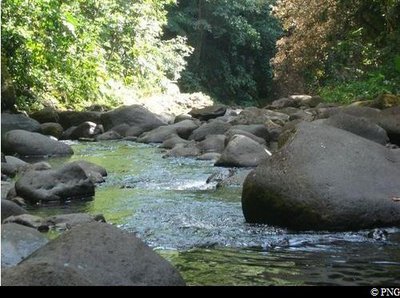
La Rivière Saint-Louis, en aval de la chute - PNG  River and waterfall
River and waterfallRiver Saint-Louis
The River Saint-Louis marks a natural limit between the municipalities of Saint-Claude and Baillif. It takes its source on the slopes of Morne Bontemps and Grand Sans-Toucher, and is then abundantly supplied with water by a large number of gullies arising in Grande Découverte and the Ananas Savannah. Downstream it joins the River Des Pères before flowing into the Caribbean Sea.
Le Saut d'Eau du Matouba - Fabien Salles / PNG  River and waterfall
River and waterfallMatouba Waterfall
The Matouba Waterfall offers refreshing coolness and tranquility.
Please note! Swimming is not recommended below the waterfall due to whirlpools, but you can swim in the river downstream.
Description
Yellow markings.
Follow the track leading down gently through the banana plantation. It turns into a footpath, passing between the fruit trees, especially mango trees.
The path becomes steeper, winding its way through the rain forest and arriving at the Saint-Louis river. Stay on the same side of the riverbank and then go up the river to the pool and waterfall. Be careful, if the water is too high for you to walk along the riverbank, retrace your steps.
Enjoy the view and atmosphere of the Saut d'eau du Matouba. But please note, swimming too close to the waterfall is dangerous. You could be dragged down by the whirlpool.
To go back to the car park, turn around and go back the same way.
Follow the track leading down gently through the banana plantation. It turns into a footpath, passing between the fruit trees, especially mango trees.
The path becomes steeper, winding its way through the rain forest and arriving at the Saint-Louis river. Stay on the same side of the riverbank and then go up the river to the pool and waterfall. Be careful, if the water is too high for you to walk along the riverbank, retrace your steps.
Enjoy the view and atmosphere of the Saut d'eau du Matouba. But please note, swimming too close to the waterfall is dangerous. You could be dragged down by the whirlpool.
To go back to the car park, turn around and go back the same way.
- Departure : Saut D'Eau du Matouba car park, Saint-Claude
- Arrival : Saut D'Eau du Matouba car park, Saint-Claude
- Towns crossed : Saint-Claude and Baillif
Altimetric profile
Recommandations
Please note, don't follow the trail in the river part during flooding or if bad weather is forecast.
Swimming is not recommended below the waterfall due to whirlpools, but you can swim in the river downstream.
In this natural setting, you should be particularly careful and alert, since Guadeloupe is subject to natural risks. It is vital to act in a responsible way, so that everyone can enjoy the hike!
Please note: unsupervised car parks and swimming.
Next to the karbay, at the start of the trail.
Swimming is not recommended below the waterfall due to whirlpools, but you can swim in the river downstream.
In this natural setting, you should be particularly careful and alert, since Guadeloupe is subject to natural risks. It is vital to act in a responsible way, so that everyone can enjoy the hike!
Please note: unsupervised car parks and swimming.
Next to the karbay, at the start of the trail.
Information desks
Maison Darracq, 149 avenue du Maréchal Foch, 97120 Saint-Claude
Headquarters of the National Park of Guadeloupe
Montéran, 97120 Saint-Claude
The reception and shop are open to the public :
- Monday, Tuesday and Thursday : 8 am to 12.30 pm and 2 pm to 5 pm.
- Wednesday : from 8 am to 1 pm.
- Friday : 8 am to 12.30 pm.
Services : reception, shop, toilets, free parking. Building accessible to people with reduced mobility.
Localisation GPS : Lat: 16,01634 N - Lng: 61,70753 W.
Access and parking
GPS starting point: Lat: 16,04608 N - Long: 61,70427 W.
In the town of Saint-Claude, go past the post office and then turn left onto Avenue du Maréchal Foch. You then pass the multimedia library, the Pavillon du Tourisme and the Saint-Claude Town Hall.
At the stop sign next to the Saint-Augustin Catholic church, turn right onto the N3 road, going up towards Matouba.
After two bridges, turn left at the crossroads with the Delgrès memorial at "Morne Savon", towards the "Saut d'eau". At the Y-shaped intersection, go towards the right, and at the following crossroads turn left. You will go past the farm residence, "La Joséphine". Park at the start of the trail with the information panels and a karbay.
12.2019: the start of the trail is very grassy. The final descent is a bit chaotic with a damaged tree trunk. It should be cut in my opinion before it falls on someone.
In the town of Saint-Claude, go past the post office and then turn left onto Avenue du Maréchal Foch. You then pass the multimedia library, the Pavillon du Tourisme and the Saint-Claude Town Hall.
At the stop sign next to the Saint-Augustin Catholic church, turn right onto the N3 road, going up towards Matouba.
After two bridges, turn left at the crossroads with the Delgrès memorial at "Morne Savon", towards the "Saut d'eau". At the Y-shaped intersection, go towards the right, and at the following crossroads turn left. You will go past the farm residence, "La Joséphine". Park at the start of the trail with the information panels and a karbay.
12.2019: the start of the trail is very grassy. The final descent is a bit chaotic with a damaged tree trunk. It should be cut in my opinion before it falls on someone.
Source
Rando Guadeloupehttps://www.randoguadeloupe.gp/
Report a problem or an error
If you have found an error on this page or if you have noticed any problems during your hike, please report them to us here:

